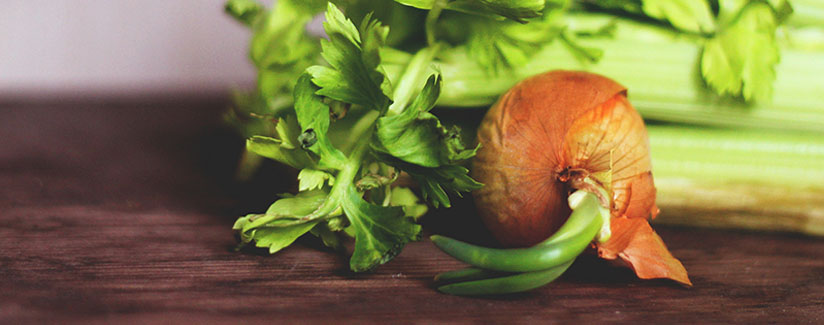
Getting Down and Dirty with Pesticide Residues and the Dirty Dozen
“The Dirty Dozen,” a list of fruits and vegetables that the Environmental Working Group claims should be purchased in the organic variety in order to reduce pesticide intake, was recently released. Below is the results of the Dirty Dozen as well as EWG’s Clean 15.
This just weeks after the USDA announced its new MyPlate dietary recommendations, which replaced the Food Pyramid. MyPlate directs consumers to fill half of their plate with fruits and vegetables, as a consumer, it’s confusing to be told to eat a diet that is rich in fruits and vegetables from one group, yet to see another group tell you that certain produce contains pesticides, so it should be bought only organically. Dr. Carl Winter, Associate Director of the FoodSafe Program and Extension Food Toxicologist at the University of California, Davis, researches the detection of pesticides and naturally-occurring toxins in foods. We talked with Dr. Winter to get down and dirty with the “dirty dozen.”
Research indicates that about 60 percent of consumers express a high level of concern about pesticide residues in their food. Is this a legitimate concern?
Dr. Winter:
We have a saying in toxicology “it’s the dose that makes the poison.” It’s the amount of the chemical rather than the presence or absence that determines the potential for harm. In the case of pesticide residues on food, we can detect them, but generally at very tiny levels. I think consumers are concerned because they’re aware that these chemicals, which have potential toxic effects, show up on foods. However, the levels at which we detect these pesticides are so low consumers have nothing to worry about.
Why are pesticides used? Are they being over-used?
Dr. Winter:
Pesticides are important in producing a lot of our food throughout the world, because there are many challenges in food production. We have problems with insects, weeds, and plant diseases. All of these can severely impact the ability to produce a crop to make it available to consumers. Pesticides are one of many options that farmers will use to try and combat these pests.
As far as overuse, we’re finding many cases where pesticides are still the primary way to achieve a good level of control over these pests. There is a lot of research being done throughout the world showing that there may be others ways to control these pests without pesticides. And I’m for that as well. I think the best approach is to use pesticides judiciously when they represent the best option, but to consider all the options that can be used to produce our crops.
What kind of safeguards are in place to protect us from pesticides?
Dr. Winter:
The Environmental Protection Agency is the primary regulatory industry that will not permit the use of a pesticide if the pesticide may pose a risk to consumers. They have a standard where they guarantee a reasonable certainty of no harm. In making that guarantee, they look at the results of toxicology tests and try to identify the most significant toxicological effects these chemicals may cause. If they find there might be a risk to consumers, they are not going to allow the pesticide be used at all.
If food is labeled organic is it guaranteed to be pesticide-free?
Dr. Winter:
No. Organic food production allows the use of several EPA registered pesticides, mostly being of natural origin. Some studies claim that you are much less likely to find pesticide residue in organic foods; some surveys found nearly 30% of the samples tested had some detectable level of pesticides, even in organic foods. I don’t think this should be something of concern to people purchasing organic foods, because the levels we are finding in these foods (just as in conventional foods) again are extremely low, and not of potential health concern.
An organization called the Environmental Working Group (EWG) recently released its “Dirty Dozen” list of the most pesticide-contaminated fruits and vegetables. What are your thoughts on this group’s rating system?
Dr. Winter:
My major concern about their approach to the study is they don’t ask the right questions, which are:
- How much of these pesticides are actually showing up on these foods
- What level of exposure might consumers expect from these foods?
I recently published a review of the 10 most common pesticides EWG tested on each of the top 12 “most contaminated” fruits and veggies. What I found in the vast majority of cases was that our typical exposure to pesticides from those foods was generally a million times lower than doses that haven’t even caused affects in animals. In short, even for the “most contaminated” produce on their list, the level of pesticide exposure is incredibly low.
Another group, the Alliance for Food and Farming*, has developed a pesticide calculator that they say tells us how many servings of fruits and vegetables would have to be eaten in order to experience health effects from pesticide-contaminated food. In your opinion, is it scientifically viable?
Dr. Winter:
I think what the Alliance has done is a simple approach that will demonstrate that “the dose makes the poison,” and to put things in perspective. The calculator illustrates the major point, which is, pesticide residues are present in the food supply, but are present at levels which are so low there shouldn’t be any consumer risk. The important thing consumers should recognize is they need to eat a diet with lots of fruits and vegetables, whether they’re organic or conventional. That’s the best thing they can do for their health.
Below is a screenshot of the calculator that the Alliance for Food and Farming has on http://safefruitsandveggies.com/*
*We are not affiliated with SafeFruitsandVeggies.com nor the Alliance for Food and Farming. We just think the calculator is a great, fact-based resource that helps us understand how pesticide use impacts our food.
“Celery&Onion” by Anastasia R is licensed under CC BY-ND 2.0..



























